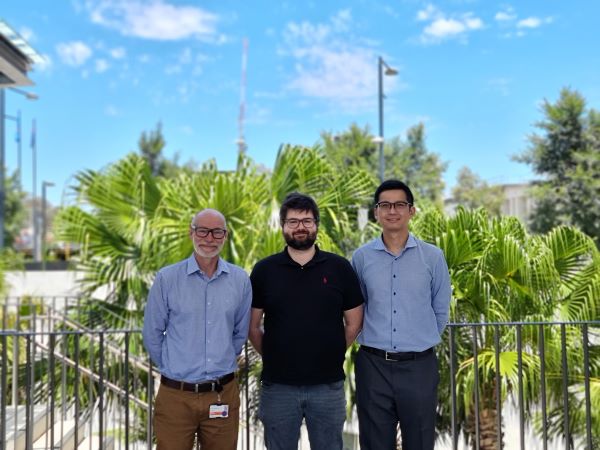The cool new ‘PJs’ that could transform kidney transplant outcomes
iiShield is one of only three companies to receive funding in 2021 from the NSW Health Medical Devices Fund.
The iiPJ seems disarmingly simple for a medical device. Nicknamed ‘kidney PJs’, it is a soft envelope of insulating material. But don’t let the cute nickname fool you: the iiPJ has the potential to change the equation for kidney transplants globally, protecting precious transplant organs from damage during surgery and saving lives.
For surgeons, it offers the gift of significantly more time to perform delicate transplants, making their work less stressful and improving patient outcomes.

Image courtesy of iiShield.
The team behind the Ischemic Injury Protective Jacket – iiPJ for short – and its commercial entity, iiShield, is one of only three recipients of grants from the NSW Health Medical Device Fund for 2021. The $2 million grant for the NSW-based researchers and clinicians has sparked joy and confidence for the future of the device. Suddenly, an international patent and a multi-centre study to test the world-first device is on the table.
“I want something I can use clinically, to help my life and our patients,” explains Professor Henry Pleass, a transplant surgeon and Professor of Surgery at the University of Sydney’s Westmead Clinical School, who is part of the iiPJ’s development team along with Associate Professor Tony Pang. “I’ve been worried that all our effort will come to nothing without further financial support. So, the beauty of this grant is that it will enable us to bring it to clinical reality. It’s an amazing opportunity.”
Kidney transplants in humans have been performed successfully since the 1950s and are by far the most common transplant surgery. With almost 700 million cases of chronic kidney disease worldwide, transplants are the best treatment option for suitable end-stage renal disease patients. Chronic kidney disease affects 1% of Australians and more than 800 people receive kidney transplants in Australia each year.
But there’s been a seemingly intractable problem. Precious donor kidneys can be kept safely on ice until the painstaking process of attaching them to the recipients’ blood supply begins. Until fully attached, however they are vulnerable to body heat. An average kidney transplant blood supply re-join takes 41 minutes, but thermal damage to the kidney begins after just 15 minutes. Research shows that every 10 minutes above 15oC increases the chances of organ damage or failure.
The solution to the thermal damage risk, so far, has been for surgeons to simply work fast to minimise harm: a high-stakes option that puts pressure on clinicians and increases the risk of complications. It’s a daunting prospect for surgeons-in-training when every second is precious.
The iiPJ was born of organic conversations among researchers, surgeons, engineers and students, all seeking to solve the thermal damage problem, which contributes to a reduced lifespan in donor kidneys and even to outright failure. In Australia, 2% of kidney transplants will fail in the first year, but the rate is as high as 6% in other parts of the world – a devastating outcome for patients dreaming of a healthier, longer life without dialysis, as well as for living donors who risk their own lives for loved ones.
“When you see it from the surgical side, it’s very personal,” says Dr Pleass. “It’s such a catastrophe. So that’s why we’re trying to improve to try and prevent that graft loss.”
Gaining precious time
Starting in 2017, ideas were tossed around and refined. They included keeping the kidney on ice inside the body, but many options obscured the surgeon’s view of blood vessels which is critical in transplant surgery. Enter Dr Jeremy Kwarcinski, a medical device developer and innovator who is a vital part of the iiShield team.
“We needed something simple, that can come on and off and purely protects the kidney from the heat of the body. So, we developed the iiPJ – or as we like to call it, the kidney PJs – because it keeps them nice and comfortable. It’s a cost-effective, single use medical device that aims to increase the available time for kidney transplantation,” says Dr Kwarcinski.
“By using the jacket inside the body during the transplantation procedure, you’re preventing this thermal injury, which means that you can increase the effective time the surgeon has to complete the transplantation. Lowering surgical pressure decreases the risk of surgical complication. Through our benchtop validation process, we were able to provide more than twice the working time for kidney transplantation before crossing that thermal threshold.”
The kidney PJs have extraordinary potential. Donor kidneys are in short supply, so reducing thermal injury means better outcomes for transplants involving “marginal” kidneys – those from older or less-healthy donors. The device could also aid the development of robotic transplant surgery, which takes longer than open surgery to complete, a luxury previously not available without thermal protection.
Using the Medical Device Fund support as a springboard, the team is looking to partner with Australian-based manufacturing and design firms to generate clinical trial-ready prototypes for a pilot study.
“From there, we’ll gain the clinical evidence we need to move to commercialising it. When it’s a clinical reality, we can start bringing the benefit of our device to the patients and surgeons across the world,” says Dr Kwarcinski.
By Michelle Fincke
Updated 4 years ago